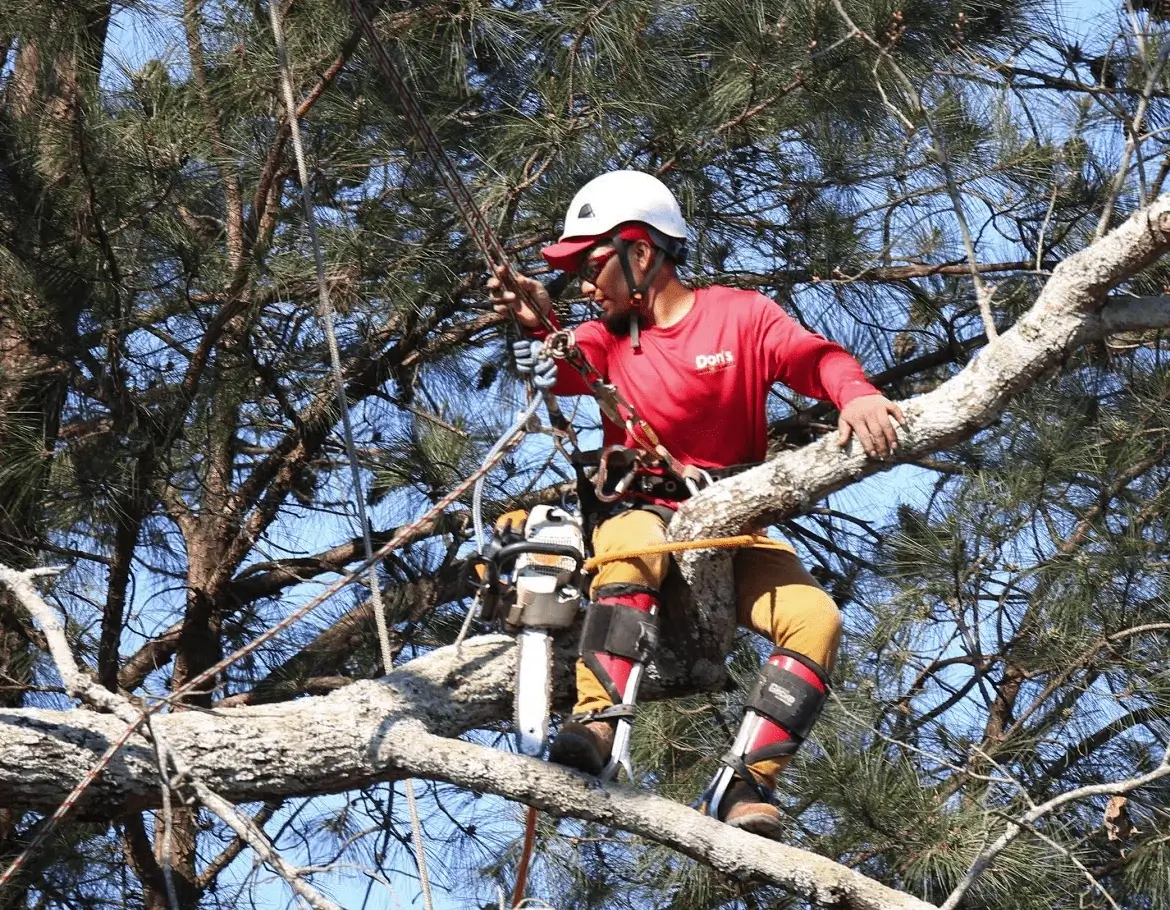How Tree Trimming Enhances Airflow and Sunlight: A Guide to Healthier Trees and Safer Yards
Keeping your trees trimmed isn’t just about making your yard look neat — it’s about helping your trees breathe, grow strong, and soak in the sunshine they need to thrive. When done right by certified tree trimming specialists, proper pruning allows better airflow and sunlight to reach not just the tree itself but everything around it.
Let’s explore how this simple maintenance step can make a huge difference to your landscape and the overall health of your trees.
Understanding the Science Behind Airflow and Sunlight in Trees
Trees are living systems. Just like humans, they need air and light to survive. The leaves take in sunlight to create energy through photosynthesis, and healthy airflow around the branches helps prevent excess moisture that can lead to rot, mold, or disease.
When trees grow too thick or wild, the canopy becomes overcrowded. Dense foliage blocks sunlight from reaching lower branches and the ground below. This not only weakens the tree but also causes patchy lawns and unhealthy undergrowth.
Without enough light and air, trees become more vulnerable to fungal infections like powdery mildew and pest infestations such as aphids and scale insects. Proper pruning helps open up the canopy and improves the tree’s ability to fight off these threats naturally.
How Tree Trimming Improves Airflow
Airflow plays a big role in a tree’s health. When branches grow too close together, they create pockets where air can’t move freely. These stagnant zones trap humidity — and that’s the perfect recipe for fungi, bacteria, and insect breeding grounds.
By using techniques like crown thinning, arborists remove selected branches throughout the canopy to allow wind to pass through. This reduces the risk of storm damage, since a tree that “breathes” properly is less likely to act like a sail during high winds.
Thinning also helps reduce branch friction — which happens when limbs rub against each other, causing open wounds in the bark. These wounds become entry points for harmful organisms.
So, better airflow means fewer diseases, stronger limbs, and safer trees overall.
How Tree Trimming Increases Sunlight Penetration
Sunlight is the lifeblood of a tree. Without it, leaves can’t perform photosynthesis, and growth slows down. When the upper branches hog all the light, the lower parts of the tree become weak and brittle. This is where tree trimming comes in.
Crown reduction, a technique used to reduce the height or spread of the canopy, allows more sunlight to filter through. This is especially helpful for fruit trees or shade trees that overshadow garden beds or lawns.
When sunlight reaches the ground, it encourages grass, flowers, and shrubs to grow healthier and denser. It also helps prevent the buildup of moss and mold in shaded, damp areas.
Plus, the improved light conditions discourage pests like carpenter ants, which love dark, moist environments.
Benefits of Improved Airflow and Sunlight Exposure
Opening up your tree’s canopy isn’t just about the tree itself — the benefits spread across your whole yard. Here’s what you’ll notice:
- Healthier Trees: With more air and light, trees grow stronger and more balanced. This reduces the risk of disease and decay.
- Better Fruit and Flower Production: For fruit-bearing or flowering trees, trimming boosts blooms and harvests by allowing more sun to reach key areas.
- Stronger Resistance to Storms: Proper airflow makes trees more flexible and less likely to snap or uproot during high winds.
- Safer Property: Trimming removes weak or dead branches that could fall and damage your home, car, or power lines.
- More Attractive Landscape: A well-trimmed tree looks better and creates a brighter, more open space in your yard.
Signs Your Trees Need Trimming for Better Air and Light
Not sure if your trees are getting enough airflow or sunlight? Here are a few signs to look out for:
- Overlapping or tangled branches
- Patches of dead or yellowing leaves inside the canopy
- Sunlight not reaching the lawn or garden under the tree
- Visible fungus or moss growth on the trunk or soil
- Branches leaning heavily in one direction
- Increased presence of insects or wood-boring beetles
If you notice any of these, it’s probably time to call a professional for an assessment.
Techniques Used by Professionals (Midstate Tree’s Approach)
Not all trimming is the same. At Midstate Tree, certified arborists use specialized techniques to make sure your trees stay healthy, balanced, and beautiful.
- Crown Thinning: Removes select branches to improve air movement and reduce canopy weight.
- Crown Reduction: Lowers the tree’s overall size without hurting its shape or structure.
- Deadwood Removal: Cuts out lifeless limbs to stop the spread of decay and disease.
- Structural Pruning: Shapes young trees to grow with strong central trunks and well-spaced branches.
- Aesthetic Pruning: Focuses on visual balance and shape, especially for ornamental trees.
Each job begins with a tree health assessment to decide the best trimming method based on species, age, and condition. The team uses proper tools and techniques to avoid damage and follows up with cleanup and inspection to leave your property safe and tidy.
DIY vs. Hiring a Certified Arborist
It might be tempting to grab a saw and do it yourself, but improper pruning can hurt more than help. Cutting too much at once, or trimming at the wrong time of year, can shock the tree and expose it to disease.
Certified arborists, like those at Midstate Tree, understand tree biology. They know where and how to cut without stressing the tree. They’re also insured, trained in safety, and equipped to handle large or dangerous branches near structures or power lines.
Hiring a pro means peace of mind, healthier trees, and no cleanup headache.
FAQs: Tree Trimming for Airflow & Sunlight
How often should I trim my trees?
It depends on the species and condition, but generally every 2–3 years is a good rule for mature trees. Fast-growing trees may need yearly attention.
Will trimming hurt my tree?
Not if it’s done right. Professional pruning actually helps trees stay healthier and live longer.
Does trimming help my lawn too?
Yes! More sunlight reaching the ground improves lawn growth, reduces moss, and lowers soil moisture — making your whole yard healthier.
What trees benefit most from crown thinning?
Maples, oaks, elms, and other shade trees thrive with regular thinning. Fruit trees also need it to boost harvests.
Conclusion: Give Your Trees the Light and Air They Deserve
Tree trimming is more than just yard work — it’s a smart way to keep your landscape safe, healthy, and beautiful. With better airflow and sunlight, your trees can thrive, your lawn will flourish, and your home will be safer from falling branches or storm damage.
If your trees are looking dense, leaning, or unhealthy, it’s time for expert care. A small trim today can lead to a stronger, brighter yard tomorrow.








